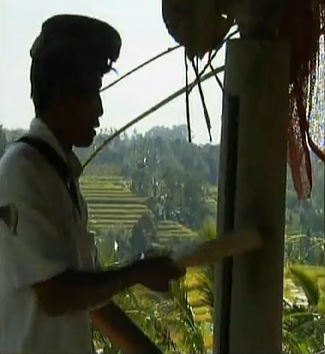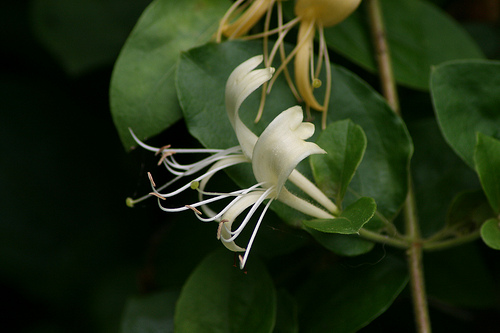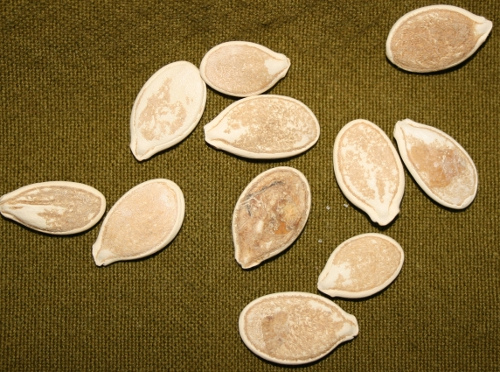 |
Overview |

Healing, Ethnobotany, and Shamanism as Gaian Methodology
Overview
Shamanism and earth based healing practices represent one of the oldest continuous human inquiry methods. The spectrum of shamanism and earth based healing are prehistoric, embodied, oral tradition inquiry methods over tens of thousands of years in development.
Key qualities of shamanism and healing that make them Gaian methodologies include their sourcing of key relationships, information, data, and perception with Earth experiences. These include somatic identification and perception through the experiences of nonhuman Earth beings or entities, including animals, plants, geomantic phenomena (mountains, place identifications), and weather, as well as nonvisible phenomena such as lineage/ancestors, central/noncorporeal spirits related to physical phenonema (spirit of the rainforest; spirit of a particular lake), etc.
A key strategy in shamanism and healing as method is that the practitioner has a keenly detailed perceptual, intuitive, embodied, immersive, and immanent relationship with the research. In modern qualitative research terminology, this has kinship with participatory action research, in which participants (co-researchers) actively partner with the researcher to develop questions, interventions, and evaluation, and grounded research, with its emphasis on incorporating feedback throughout the process into the living experience of the research and subsequent stages of the research.
The research methods are expansive based on expanded sources of knowledge and expertise. Within the refined frameworks of different practitioners knowledge bases, very complex systems of methods and techniques guide the work along with the expert use of extended knowledge bases which might include noncorporeal, real-time databases of guidance from ancestral, spiritual, or other realms.
As with other forms of interactive and action research, shamanism and healing shatters conventional Western subject-object relations and instead positions the shaman/healer/researcher within the living body of the living Earth. The shaman or healer, by precise interventions (which are not necessarily perceived as interventions by the practitioner – see Merleau-Ponty’s chiasm in Ecophilosophy for more), returns systems to their essential harmony. In some systems the very distillation (not representative but emblematic/transsubstantiated) of macrocosmic forces into ritualized microcosmic symbols that are manipulated/brought back to balance effects the change. Awakening, catalyzing, adjusting, expressing, detoxifying: the shamanic methods are multivarious and richly textured depending on the field of inquiry.
This relates to complexity theory in the example of the Water Temples System in Bali.
Healing and Shamanism as a Gaian Methodology: Roots Stem and Leaf Flower Seeds Annotated Bibliography Resources Related Review |
|
Roots of Healing and Shamanism as Method |

Shamanism and earth-based healing are pervasive inquiry methods in every human culture that has ever existed. Until recent times when humans began to perversely perceive themselves as separate from the rest of life on Earth, shamanism has served a vital role as translator and traveler across dimensions and languages, weaver and mender. Shamanism springs from the source desire for wellness and wholeness. Shamans and healers leverage the insight that humans are embedded in all-that-is and explore, evaluate, and cultivate natural correspondences, systems of knowledge, and wisdom to provoke wellness. A natural result of human inquiry into the healing power of plants, rocks, animals, and other materials, shamanism and healing represents one of the deepest and most vast demonstrations of wisdom-carrying from inquiry. Only the most recent excesses of iatrogenic (disease causing) Western medicine, separating spirit and body, is the outlier in this regard. Indigenous and emplaced holism nourishes the roots of Shamanism and earth healing.
Modern shamanism has thousands of expressions. P.N. Jones in Anthropology of Consciousness's research into the scholarly use of the term (2008) reveals its history and current broad usage. Healing the Soul Wound is a good example of findings regarding re-emplacing and empowering native peoples from the trauma of land loss and colonization to their shamanic roots.
|
|
|
Stem and Leaf of Healing and Shamanism as Method |

In many parts of the world, including throughout hotspots of biocultural diversity (L. Maffi 2007) where human language and culture as well as bio-diversity still flourish, indigenous peoples continue to practice shamanic inquiry. Cultural Survival Quarterly is a rich ongoing resource for researchers in transdisciplinary ethnography that helps inform research, fraught with the complexities of colonization and appropriation, with respect: http://www.culturalsurvival.org/.
Many of the modern healing modalities coming to popularity in the past fifty years in the West are sourced in continuous lineages of shamanic and earth-based insight at the intersection of herbal and energetic insight, medicine, embeddedness, embodied-ness, and earth connection, including Classical Chinese Medicine, Ayurvedic Medicine, Yoga, and Hellinger’s Family Constellations work from his time with tribal ways in south Africa, and others. But the fundamental earth-connected insights of dream, fruit, flower, seed, root, leaf, stem, breathing beings, rock beings, ancestors and those who are to come persist in infinite variety across these multiple profusions of human-natural co-evolution. In a sense, every researcher must first give thanks to shamans and healing ancestors who from aeons before--before cars and tape recorders, before writing--sparked the art and craft of inquiry, of close observation, of questioning and seeking. And as Romanyshyn, who broadens "re-search" in The Wounded Researcher (2005) explores how research must, to be intelligent, include the many dimensions of information continuously flowing in and through the lives of the researcher, not only "in the lab" so to speak, but also in life and dream. The imaginal is a necessary dimension and source of research information. |
|
|
Flowering of Healing and Shamanism as Method |

Shamanism often carries and cultivates the cultural wisdom about living in ecological balance such as indignenous knowledge combatting incursions of Christianity, hybrid seeds, and the Green Revolution in the Gamo Highlands. Shamanism is one of the cultural wisdom carriers of the ways that plants and humans have co-evolved. Shamanism as a term can be deceptive because in some cultures, healing knowledge is distributed and the role of healer is shared. Researchers need to be aware when researching shamanism or when approaching research as a healing practice to explore options for distributing rather than centralizing transformation and power. The Western cultural overlay of heroism can be insidious to researchers' capacity for learning from what is.
Martin Prechtel has popularized shamanism as inquiry method with Secrets of the Talking Jaguar: A Mayan Shaman’s Journey to the Heart of the Indigenous Soul (1998) in which he details the use of acute observation (what might be termed nano-observation, the radically close cultivation of deep observational skills that far predates the use of the microscope). Two-time Fulbright winner Alan Kilpatrick of Pacifica Graduate Institute on a recent ethnographic journey to Central America discusses his use of mind-altering sacred medicine to experience shamanic healing. Barbara Tedlock who has written extensively of her time with the Maya shamans in The Woman in the Shaman’s Body: Reclaiming the Feminine in Religion and Medicine (2005) and Time and the Highland Maya (1982) offers a feminist frame of intersubjectivity (1982, p. 5) as counterpoint to dispassionate observer frames for research. Plotkin, Castenada, Noble, and Teisch are all modern reclaimers or direct lineage holders of shamanic and earth based healing wisdom wellsprings.
|
|
|
Seeds of Healing and Shamanism as Method |

Current Gaian methods research that sources itself in shamanism includes the research on ethnobotanicals, elder wisdom, the language work of Cultural Survival the biocultural diversity work and conservation advocacy of L. Maffi and TerraLingua. More holistic ethnography with shamanic insight is evidenced in López-Zent and Zent (2004), for example in "Amazonian Indians as ecological disturbance agents: The Hotï of the Sierra de Maigualida, Venezuelan Guayana." (In Carlson and Maffi, Eds.) A good overview of the field of biocultural diversity including the work to preserve and leverage the insights of shamanic integration appear in Maffi’s works such as "Linguistic, Cultural, and Biological Diversity" (see quote). Shamanism and healing can also be construed as forms of ecospirituality.
Martin Prechtel recounts, "No Tzuntujil disregards his dreams. If the dreams are overly disturbing or more powerful than usual, or if they startle you awak, then shamans are approached for a ritual interpretation. To the shamans, dreams are the backbone of their way of life, influencing every decision in the most powerful fashion. Dreams are rarely taken literally, and must be read properly. Moreover, certain kinds of dreams help Tzutujil shamans divine illness, allowing them to see inside a client's 'wilderness body' into his or her spirit life, to find the true personality of their souls and thereby understand the nature of what has befallen them....Although the landscape of dreams may seem different than the landscape of the awake world, it is actually the balanced opposite, reversed version, where our souls live out our bodies' lives reenacted as if in a complex kind of mirror. Like the two opposing wings of a butterfly, the dreamworld is one wing and the awake world is the other wing. The butterfly must have both wings connected at the Heart in order to fly and function. Neither wing--dreams or waking--contains all of life. Real life occurs as a result of the interaction of the two. The life is the butterfly's heart, and both dreaming and awake workign life are necessary to keep the heart alive. Our lives, like the butterfly's heart, are kep aloft by two opposing, mirroring, twinlike wings. This heart is the third hing, the Rukus heart that all ritual seeks to feed and keep alive..." (p. 169-170) |
|
|
|
|
 |
 |
|
Gaian Methodologies - A Convergence of Sensuous Earth

Gaian Methodologies Team
The main resources on this site include how the flower petals of sources and methods grow together to compose the flowering of Gaian methods and methodologies. We include essays and bibliographies to nurture... More…

Prescott College PhD in Sustainability Education
Prescott College offers a Doctor of Philosophy (Ph.D.) in Education with a concentration in Sustainability Education. This low-residency, doctoral program combines expansive interdisciplinary inquiry with intense individual research and practice, and follows a cohort-based learning model...More… |
|
|
 |
|
|